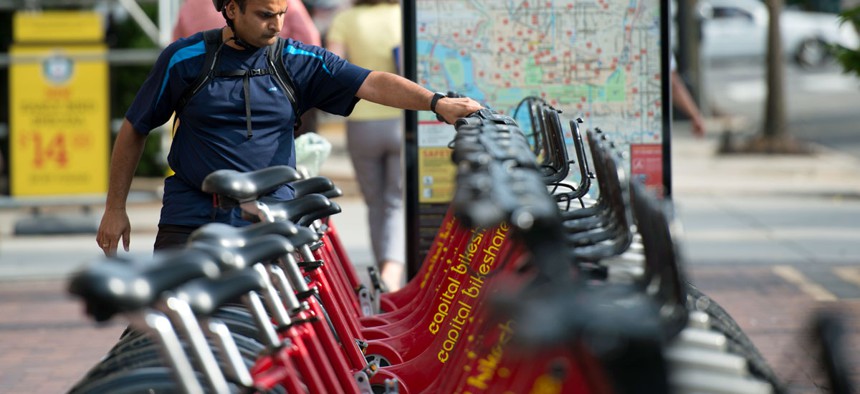What Capital Bikeshare’s Busiest Bike Says About Open Data

A rider picks out a bike at a Capital Bikeshare station in Washington, DC. Molly Riley/AP
Capital Bikeshare releases a plethora of data about its bike fleet. Developers have done some surprising things with the data.
W20167 gets around.
The candy-apple-red bicycle is the busiest in Capital Bikeshare’s fleet, in action for 483 hours and 1,567 rides last year over the Washington, D.C., area. That includes one 12-hour romp across town that can only be described as epic.
Suffice it to say, Queen probably envisioned W20167 when they wrote the best bicycle song of all time. Heck, W20167 even has her own Twitter account now. And why not? She deserves it.
I could include worse bike jokes or puns about riding, but I won’t.
How do we know so much about W20167? Capital Bikeshare releases a plethora of data about its bike fleet -- information like the number of rides and what locations are most popular for customers, and Washington, D.C., resident Mike Azar helpfully crunched the numbers (The Washington Post recently profiled Azar’s effort).
Obviously, the kind of data released by Capital Bikeshare is beneficial to the Capital Bikeshare, which itself is a public-private partnership the local governments in the Maryland, Virginia and D.C. region have a stake in. Data like this shows where bikes are needed most (and thus need to be stocked), but could also tell where bikes are most likely to be vandalized, too.
This kind of open data effort is a useful example to federal agencies everywhere.
For a couple years now, the Obama administration has pushed agencies to open up their data so it’s easier to access by the taxpaying public and entrepreneurs.
Some agencies have gone all in on data, hiring chief data officers or coming up with creative industry partnerships to unleash the true insight and power of the government’s collected information. There’s a lot of talk about how agencies might make better use of the huge amount of data it collects on everything from the weather to demographic data, but a helpful existing example of open data always underline why the government should make more data available to the public in the first place.
Creative people like Azar can take monotonous bike-logging data and turn a single bike into a minicelebrity. Imagine what they can do with so much more than that.



